Today Current Affairs: 11th April 2022 for UPSC IAS exams, State PSC exams, SSC CGL, State SSC, RRB, Railways, Banking Exam & IBPS, etc
Table of Contents
Monetary Policy Review: RBI

The Reserve Bank of India (RBI) in its latest Monetary Policy review has decided to keep the main policy rate – Repo rate – unchanged at 4%.
- It has also retained its accommodative stance, but indicated it will engage in a gradual and calibrated withdrawal of surplus liquidity to rein in inflation.
Monetary Policy Review:
- In the wake of the rise in crude oil and commodity prices and the impact of the Russian invasion of Ukraine, RBI has slashed the growth forecast to 7.2% for fiscal 2022-23 from 7.8% projected earlier.
- The Russia-Ukraine war could potentially impede the economic recovery through elevated commodity prices and global spill-over channels.
- The RBI also introduced a new measure, the Standing Deposit Facility an additional tool for absorbing liquidity to suck out surplus liquidity of Rs 8.5 lakh crore from the financial system which is fuelling inflation.
- This Monetary Policy Review signals that the RBI has finally shifted its priorities to tackle inflation.
- Thus, there is a possibility of a hike in its key policy rate (Repo Rate) in the coming months.
- Further, RBI has hiked its inflation forecast from 4.5% projected earlier to 5.7% still below the upper band of 6% of the RBI’s target – in 2022-23.
- RBI policy panel took a concrete step by restoring the policy rate corridor under Liquidity Adjustment Facility(LAF) to pre-pandemic width of 50 basis points.
- This is aimed at bringing down the inflationary pressures.
- LAF is a tool used in the monetary policy that allows banks to borrow money from the RBI through repurchase agreements (Repo) or to lend funds to the RBI through reverse repo agreement.
Supreme Court (SC) Upheld The Constitutional Validity Of FCRA:

The Supreme Court (SC) upheld the constitutional validity of the Foreign Contribution (Regulation) Amendment Act (FCRA), 2020.
- It held that receiving foreign donations cannot be an absolute right and can be regulated by the Parliament.
- In 2020, the Indian government had proposed amendments to the FCRA, which imposed new restrictions on how Non-Governmental Organisations (NGOs), individuals, and other organisations could receive or use funds contributed from abroad.
Highlights of the Judgements:
- Foreign Contributions serves as a medicine so long as it is consumed (utilised) moderately and discreetly.
- However, free and uncontrolled flow of foreign contribution can act as an intoxicant that has the potential of impacting the sovereignty and integrity of the nation.
- The SC underlined that foreign contributions may tend to influence or impose political ideology.
- Thus, FCRA amendments are essentially conceived in the interest of public order as the intent is to prevent misuse of donations coming from foreign sources.
- Receiving foreign donations cannot be an absolute or even a vested right.
- This is because the theory of possibility of national polity being influenced by foreign contribution is globally recognised.
- In this scenario, it had become necessary for Parliament to step in and provide a stringent regime for effectively regulating the inflow and utilisation of foreign contribution.
Foreign Contribution (Regulation) Act (FCRA), 2010:
- Foreign funding of persons in India is regulated under FCRA act and is implemented by the Ministry of Home Affairs.
- Individuals are permitted to accept foreign contributions without permission of MHA.
- However, the monetary limit for acceptance of such foreign contributions shall be less than Rs. 25,000.
- The Act ensures that the recipients of foreign contributions adhere to the stated purpose for which such contribution has been obtained.
- Under the Act, organisations are required to register themselves every five years.
Amendments done in the Act:
- Prohibition to accept foreign contribution: It bars public servants from receiving foreign contributions.
- It prohibits the transfer of foreign contribution to any other person.
- Aadhaar number is mandatory for all office bearers, directors or key functionaries of a person receiving foreign contribution, as an identification document.
- The foreign contribution must be received only in an account designated by the bank as FCRA account in such branches of the State Bank of India, New Delhi.
- No funds other than the foreign contribution should be received or deposited in this account.
- It allowed the government to restrict usage of unutilised foreign contribution.
- This may be done if, based on an inquiry the government believes that such person has contravened provisions of the FCRA.
- While NGOs earlier could use up to 50% funds for administrative use, the new amendment restricted this use to 20%.
Indian Tent Turtles:

The Union Minister of Environment said in Parliament that there are no reports to indicate that the Indian tent turtle is on the verge of extinction due to illegal mining in the Narmada River.
- The Indian tent turtle is listed in Schedule –I of the Wild Life (Protection) Act, 1972 and is thereby provided the highest degree of protection.
- The males are smaller than the females in size and have longer and thicker tails.
- It is a species of turtle that is native to India, Nepal and Bangladesh and it is quite similar to the Indian roofed turtle.
- IUCN: Lower Risk/ least concern.
Defence Has Released The Third Positive Indigenisation List:
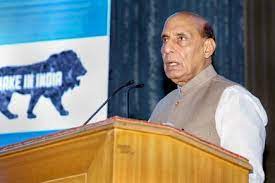
The Ministry of Defence has released the third positive indigenisation list of 101 items, comprising major equipment/platforms.
- The ‘First Negative Indigenisation’ List comprising 101 items was notified in August 2020.
- The Second Indigenisation list was notified in June 2021 import list for 108 items.
- The Third List includes: Hghly complex Systems, Sensors, Weapons and Ammunitions like Light Weight Tanks, Mounted Arty Gun Systems, Next Generation Offshore Patrol Vessels (NGOPV) etc.
- Positive indigenisation list Introduced in August 2020, the negative list essentially means that the Armed Forces—Army, Navy and Air Force—will only procure such items from domestic manufacturers.
- The manufacturers could be private sector players or Defence Public Sector Undertakings (DPSUs).
- As per Stockholm International Peace Research Institute, India has been the second largest importer between 2014 and 2019 with US$ 16.75 billion worth of imports during this period.
- The government wants to reduce the dependence on imported items in defence and give a shot in the arm to the domestic defence manufacturing industry.
- By denying the possibility of importing the items on the negative list, the domestic industry is given the opportunity to step up and manufacture them for the needs of the forces.
- 2nd list: The Defence Ministry notified the second negative import list, in May 2021, of 108 items that can now be only purchased from indigenous sources. The new list takes the total number on the list to 209.
- The list comprises complex systems, sensors, simulator, weapons and ammunitions like helicopters, next generation corvettes, Air Borne Early Warning and Control (AEW&C) systems, tank engines.
Lingaraj Temple Ordinance:

The Central government has told the Odisha government that its ordinance to bring the 11thcentury Lingaraj temple in Bhubaneswar and its associated temples under a special law is outside the legislative competence of the state legislature.
- Lingaraj temple is the largest temple in Bhubaneswar.
- Constructed by King Jajati Keshari in the 10th Century and completed by King Lalatendu Keshari in the 11thcentury.
- The temple is built in the Deula style.
- The temple, dedicated to Lord Shiva, marks the culmination of the temple architecture in Bhubaneswar which was the cradle of the Kalinga School of Temple Architecture.
- Lingaraj Temple Ordinance of 2020 covers 12 centrally protected monuments including the Lingaraj temple and three tanks.
- The ordinance has a provision for retail shops for sale of commodities inside or outside of the temples.
- The managing committee will oversee the lease or sale of movable or immovable property attached with the Lingaraj temple.
- It has Provisions for Repair and construction of new buildings.
- The Union Ministry of Home Affairs (MHA) has said several provisions of the proposed ordinance were in conflict with the Ancient Monuments and Archaeological Sites and Remains (AMASR) Act, 1958.
- Firstly, it was outside the legislative competence of the state legislature as it violates the provisions of AMASR Act. Under AMASR Act, the Archaeological Survey of India (ASI) is responsible for the conservation and preservation of these 12 centrally protected monuments.
- As per AMASR Act a monument should not be used for any other purposes not consistent with its character. Allowing retail shops to be constructed under the ordinance violates this provision.
- As per the AMASR Act, new constructions are not allowed in prohibited areas (100 metre zone from protected monument).
Axiom Mission 1 (Ax-1):

Axiom Mission 1 (Ax-1) is a crew mission to the International Space Station (ISS) that is operated by the Axiom Space.
- This mission was launched on 8th April 2022 from Kennedy Space Center.
- It is a private crew mission.
- The crew consists of Michael López-Alegría who is a professionally trained astronaut who has been hired by Axiom Space and businessmen Larry Connor from the United States, Eytan Stibbe from Israel, and Mark Pathy from Canada.
- The businessmen paid USD 55 million each for this trip.
About Axiom Space
- In 2016 Axiom Space was founded with the objective of creating the first commercial space station. In 2020, Axiom was given access to the ISS’s forward port to which Axiom has plans to dock its “Axiom Orbital Segment.”
- It is a complex that after 2024 will be grown into having five pressurized modules having a large observation window.
- Axiom also has plans to charter paid missions to the ISS for wealthy individuals of the planet.
‘Gaofen-3 03’: China’s Earth Observation Satellite
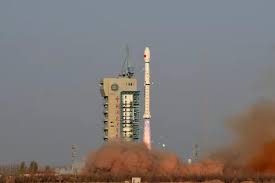
China has launched a new Earth observation satellite on 7th April 2022. This satellite will become a part of the country’s land-sea radar satellite constellation. It will capture images to help China safeguard its maritime interests.
- The satellite has been named Gaofen-3 03.
- It was from the Jiuquan Satellite Launch Centre with the use of a Long March-4C rocket.
- The satellite has been successfully inserted into the planned orbit.
- This newly launched satellite will be networked with the already orbiting Gaofen-3 and Gaofen-3 02 satellites.
- These 3 satellites will form a land-sea radar satellite constellation and will be capturing stable, reliable, synthetic aperture
- A lot of SAR images are captured by Earth Observation (EO) satellites every day. SAR images have the capabilities to process images during all-weather operations.
- The images produced have a high spatial resolution.
- These images boast a 1-meter resolution thus, improving China’s monitoring capabilities.
- The images that will be captured by the satellite will help in the mitigation and prevention of marine disasters, help in the monitoring of the dynamic marine environment, environmental protection, marine research, agriculture, water conservancy, and meteorology.
- It will also help in safeguarding the maritime rights and interests of the country.
‘AVSAR’ Scheme:
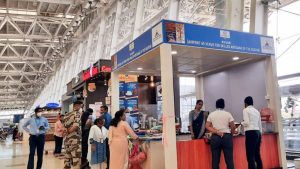
To encourage the talent of women, artisans and craftsmen and provide them with the right opportunities, Airport Authority of India (AAI) has taken an initiative to allocate space to Self Help Groups (SHGs) at its airports for selling/showcasing the self-made products of their region.
- Under “AVSAR” (Airport as Venue for Skilled Artisans Of The Region), which is an initiative of AAI, an opportunity to help the indigent to mobilize their households into functionally effective self-earned groups for self-reliance and self-dependence, has been provided.
- Under this scheme, an area of 100-200 square feet has been earmarked at each AAI operated airport.
- The space is being allotted to the self- help groups, turn on turn basis, for a duration of 15 days.
- Few outlets have already been commissioned at Chennai, Agartala, Dehradun, Kushinagar, Udaipur & Amritsar Airport wherein SHGs operated by local women, are showcasing and marketing their homemade local products like Puffed Rice, Packaged Papad, Pickles, traditional craft with contemporary design to the air travellers.
Continuation Of Atal Innovation Mission (AIM) Till March 2023:

The Union Cabinet has approved continuation of Atal Innovation Mission (AIM), till March 2023.
- The AIM shall work on its intended target of creating an innovation culture and entrepreneurial ecosystem in the country
- This will be done by AIM via its various programs.
- The intended targets that will be achieved by AIM are:
- Establishing 10000 Atal Tinkering Labs (ATLs),
- Establishing 101 Atal Incubation Centers (AICs),
- Establishing 50 Atal Community Innovation Centers (ACICs) and
- Supporting 200 startups via the Atal New India Challenges.
- The total budgeted expenditure of 2000+ crore shall be incurred in the process of the establishment and supporting the beneficiaries.
- The Mission has been set up under the NITI Aayog, in accordance with the Finance Minister’s declaration in the 2015 Budget Speech.
- The objectives of the AIM are to create and promote an ecosystem of innovation and entrepreneurship across the country via interventions at school, university, research institutions, MSME and industry levels.
MH-60R Multi-Role Helicopters:

The first batch of Indian Navy aircrew successfully completed its training on the MH-60R Multi-Role Helicopters (MRH) at the U.S. Naval Air Station, North Island in San Diego.
- India had signed a $2.2 billion deal for MH-60R helicopters built by Lockheed Martin during the visit of then U.S. President Donald Trump in February 2020.
- Three helicopters were handed over to the Indian Navy last July in the U.S. and are being used for training Indian pilots at Pensacola, Florida and San Diego. Deliveries are expected to be completed by 2025.
- The MH-60Rs are a replacement of the Sea King 42/42A helicopters already decommissioned in the 1990s, and are envisaged to operate from the frontline ships and aircraft carriers.
- The MH-60R helicopters will provide the Navy enhanced offensive role including anti-submarine warfare, anti-ship strike, specialised maritime operations as well as search and rescue operations.
- This will be the first major induction of helicopters by the Navy in decades for deployment on ships.
Pinaka Rocket Systems:
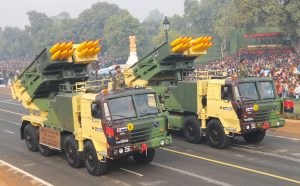
Pinaka Mk-I (Enhanced) Rocket System (EPRS) and Pinaka Area Denial Munition (ADM) rocket systems have been successfully flight-tested by Defence Research and Development Organisation (DRDO) and Indian Army at Pokhran Firing Ranges.
- A total of 24 EPRS rockets were fired for different ranges during the last fortnight.
- Required accuracy and consistency was achieved by the rockets meeting all trial objectives satisfactorily.
- With these trails, the initial phase of technology absorption of EPRS by the industry has successfully been completed and the industry partners are ready for user trials/series production of the rocket system.
- The Pinaka rocket system has been developed by Armament Research and Development Establishment, Pune supported by High Energy Materials Research Laboratory, another Pune-based laboratory of DRDO.
- The EPRS is the upgraded version of Pinaka variant which has been in service with the Indian Army for the last decade.
The Civil War In Yemen:
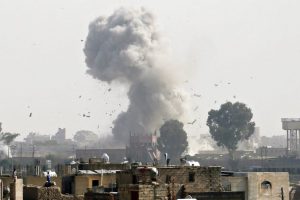
The civil war in Yemen — between the Saudi-led coalition and the Iran-backed Houthi rebels — saw a historic two-month truce deal last week, the first of its kind since 2016.
- The parties agreed to halt all offensive military, air, ground and maritime operations inside Yemen and across its borders.
- Under the deal, commercial flights will now be able to operate from the Houthi-held capital of Sanaa, fuel ships will be allowed to pass into the port of al-Hudaydah.
- The ceasefire agreement, brokered by the United Nations came into effect on April 2. The deal also coincided with the first day of Ramzan, the Muslim holi month of fasting.
- The truce is the first nationwide cessation of hostilities agreed by all sides in over six years.
- The war began in 2014 when Iran-backed Houthi rebels seized Sanaa and the country’s northwest, sending the ruling government into exile.
- Few months in, a military coalition led by Saudi Arabia intervened with a massive air campaign, hoping to drive back the Houthis and restore the government.
- Since the war escalated in 2015, Yemen has suffered from one of the world’s worst humanitarian crises, witnessing mass hunger, poverty and civilian deaths.
- The UN estimates over 377,000 deaths due to the conflict as of late 2021.
Solid Fuel Ducted Ramjet (SFDR) Booster : Missile System
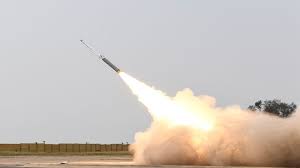
India successfully flight tested Solid Fuel Ducted Ramjet (SFDR) Booster, a missile system, at the Integrated Test Range (ITR) in Chandipur off the Odisha coast.
- The Defence Research and Development Organisation (DRDO) began developing SFDR first in 2017 and had conducted successful tests in 2018 and 2019 as well.
SFDR:
- It is a missile propulsion technology jointly developed by India and Russia.
- SFDR technology is a missile propulsion system based on the concept of Ramjet Engine principle.
- A ramjet is a form of air-breathing jet engine that uses the vehicle’s forward motion to compress incoming air for combustion without a rotating compressor.
- In a ramjet, the high pressure is produced by “ramming” external air into the combustor using the forward speed of the vehicle.
- The external air that is brought into the propulsion system becomes the working fluid.
- Ramjets produce thrust only when the vehicle is already moving, ramjets cannot produce thrust when the engine is stationary or static.
- The system utilises a solid fuelled air-breathing ramjet engine.
- Unlike solid-propellant rockets, the Ramjet takes up oxygen from the atmosphere during flight.
- Thus, it is light in weight and can carry more fuel.
- The SFDR has been developed by Defence Research and Development Laboratory, Hyderabad in collaboration with other DRDO laboratories such as Research Centre Imarat, Hyderabad and High Energy Materials Research Laboratory, Pune.
World Food Price Index: FAO
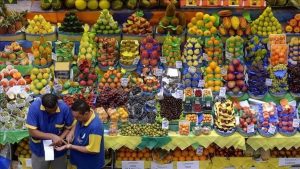
According to the UN Food and Agriculture Organization’s (FAO), the World food price index averaged 159.3 points in March, breaking an earlier record of 137.6 points scaled 11 years ago in February 2011.
- The FAO index has exhibited huge volatility in the last two years through the Covid-19 pandemic and now the Russia-Ukraine war.
- The index had crashed to a four-year low of 91.1 points in May 2020, due to demand destruction triggered by pandemic-induced lockdowns across countries.
- But as demand returned with governments lifting economic activity and movement restrictions, supply chain disruptions — from shortages of everything, from harvesting labourers to packaging materials and shipping containers — came to the fore.
- The supply shortages have worsened with the Black Sea region tensions, leading to the index moving up almost 24 points or 17.5% between January and March 2021.
- The FAO’s cereal and vegetable oil price indices hit record highs of 170.1 points and 248.6 points, respectively, in March 2021.
- Port closures in the Black Sea and Azov Sea, plus Russian banks being cut off from the international payments system, have resulted in massive shipping disruptions from this key agri-commodities supply region.
Food Price Index:
- It was introduced in 1996 as a public good to help in monitoring developments in the global agricultural commodity markets.
- The FAO Food Price Index (FFPI) is a measure of the monthly change in international prices of a basket of food commodities.
- It measures changes for a basket of cereals, oilseeds, dairy products, meat and sugar.
- Base Period: 2014-16.
Food and Agriculture Organization:
- FAO is a specialised agency of the United Nations that leads international efforts to defeat hunger.
- World Food Day is celebrated every year around the world on 16th October. The day is celebrated to mark the anniversary of the founding of the FAO in 1945.
- It is one of the UN food aid organisations based in Rome (Italy).
- Its sister bodies are the World Food Programme and the International Fund for Agricultural Development (IFAD).




